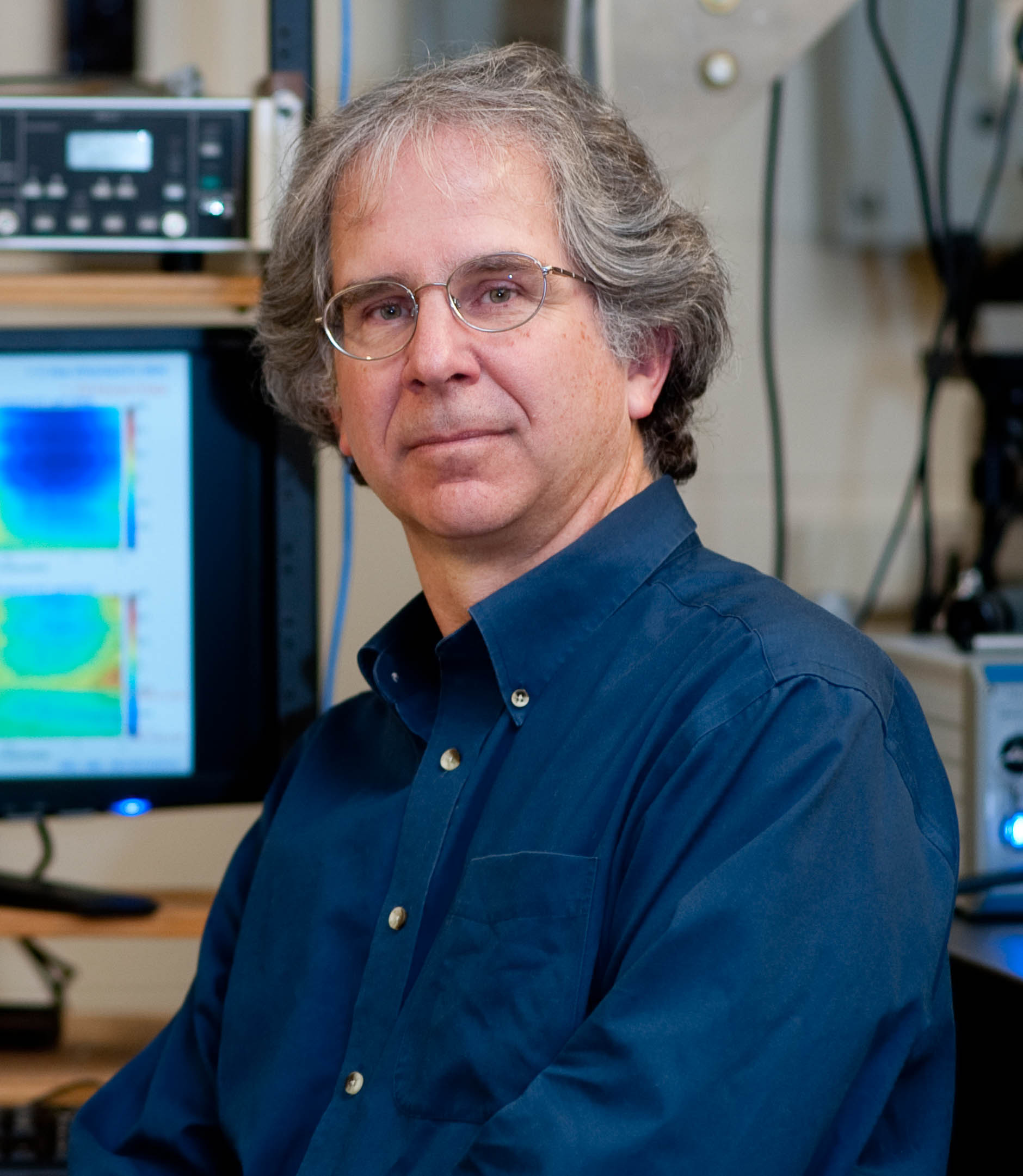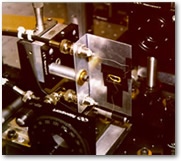Research Interests
BioInterferometry
Laser interferometry probes the smallest motions and displacements of living matter, uncovering living functions and biomolecules that are invisible to any imaging-based microscopy. By using the ultra-sensitive capabilities of interferometry, we are detecting displacements as small as a picometer -- comparable to the radius of the proton--and approaching the single-molecule limit using the direct interaction of light with the molecular dipole. We are pursuing two main areas in biointerferometry:1) interferometric detection of biomolecules on surfaces, using approaches such as the BioCD (a spinning biochip) and molecular interferometric imaging (MI2); and 2) Optical coherence imaging (OCI) by which we peer inside living tissue and extract subcellular motion as the functional measure of cellular health.
Optical Coherence Imaging
Laser fields propagating through scattering tissue retain an exponentially decaying coherence that can write holographic gratings on a holographic medium. The first volumetric holograms of living tissue were made by the Adaptive Optics and Biophotonics group at Purdue University in 2002 using ultra-sensitive dynamic holographic film called photorefractive quantum well (PRQW) devices. Digital holography, using CCD cameras, provides similar advantages for holographic optical coherence imaging (OCI). In biomedical imaging applications, cellular motion, recorded as shimmering holograms, acts as a novel imaging contrast agent. Recent interest is on the action of anti-mitotic cancer drugs on tissue.
The BioCD
The BioCD The BioCD performs molecular diagnostics in the form of a compact disc. The BioCD, invented in the Adaptive Optics and Biophotonics group at Purdue University, combines the simplicity of spinning-disc interferometry (SDI) with the power of antibodies to detect disease. A conventional compact disc has 5 billion diffraction-limited pits encoding digital information. The motivation behind the BioCD is to turn a disc into 5 billion micro-test-tubes to test for every type of blood protein in a few drops of blood. The science of molecular interferometry combines the physics of laser coherence, quantum optics, light-matter interactions, and surface science, with molecular biology and biomedical diagnostics.
Solid-State Physics and Laser Optics
Light is a natural probe of the solid state. Many materials are transparent to light, or scatter light in unexpected ways. We are pursuing laser-based investigations of the optical properties of ultra-thin films--for thicknesses beyond what other optical approaches can measure--thicknesses at which even themacroscopic concept of a solid film breaks down.
PicoMetrology
Picometrology uses a laser to scan a rapidly spinning disk on which a thin material is deposited. By collecting both symmetric and antisymmetric light scattering interferometry signal, the complex refractive index of the thin material may be measured. The effective height sensitivity of this approach is on the order of a picometer.
· Mesoscopic Point-Like Defects in Semiconductors
Mesoscopic point-like defects are a class of extended defects with surfaces of minimal curvature that span in size from the point defect limit (multi-vacancy, antisite, impurity complex, etc.) to macroscopic inclusions or voids within a semiconductor host.
Dynamic Holography
Our group has a long tradition in dynamic holography as we use coherent light sources to write self-adapting holograms that track and shift with the motions of the holographic target. Our original work on photorefractive quantum wells explored aspects of adaptive interferometry and its applications. Our recent interest has turned to digital holography, especially with biological applications.
· Shimmering Holograms in Quantum Nanostructures
What does a moving hologram look like?
· Bending Light with Light
Take two flashlights at night and cross them. You know that the light beams pass right through each other, right? As we all know, this is because Maxwell's equations (the equations of light) are linear. Light cannot interact with light -- usually.
· Photorefractive Quantum Wells
Photorefractive quantum wells fully exploit the resonance represented by the excitonic absorption edge in semiconductors.
· A Femtosecond Optical Function Generator
Ultrafast pulses contain a wide bandwidth of several THz for a typical 100 femtosecond pulse duration. The successful use of this bandwidth is desirable for high throughput of coded data in fiber optic communications channels.
· Quantum Engineering the Holographic Ear
As unusual as it sounds, optical holography is a great way to "hear" sound in solid objects.



